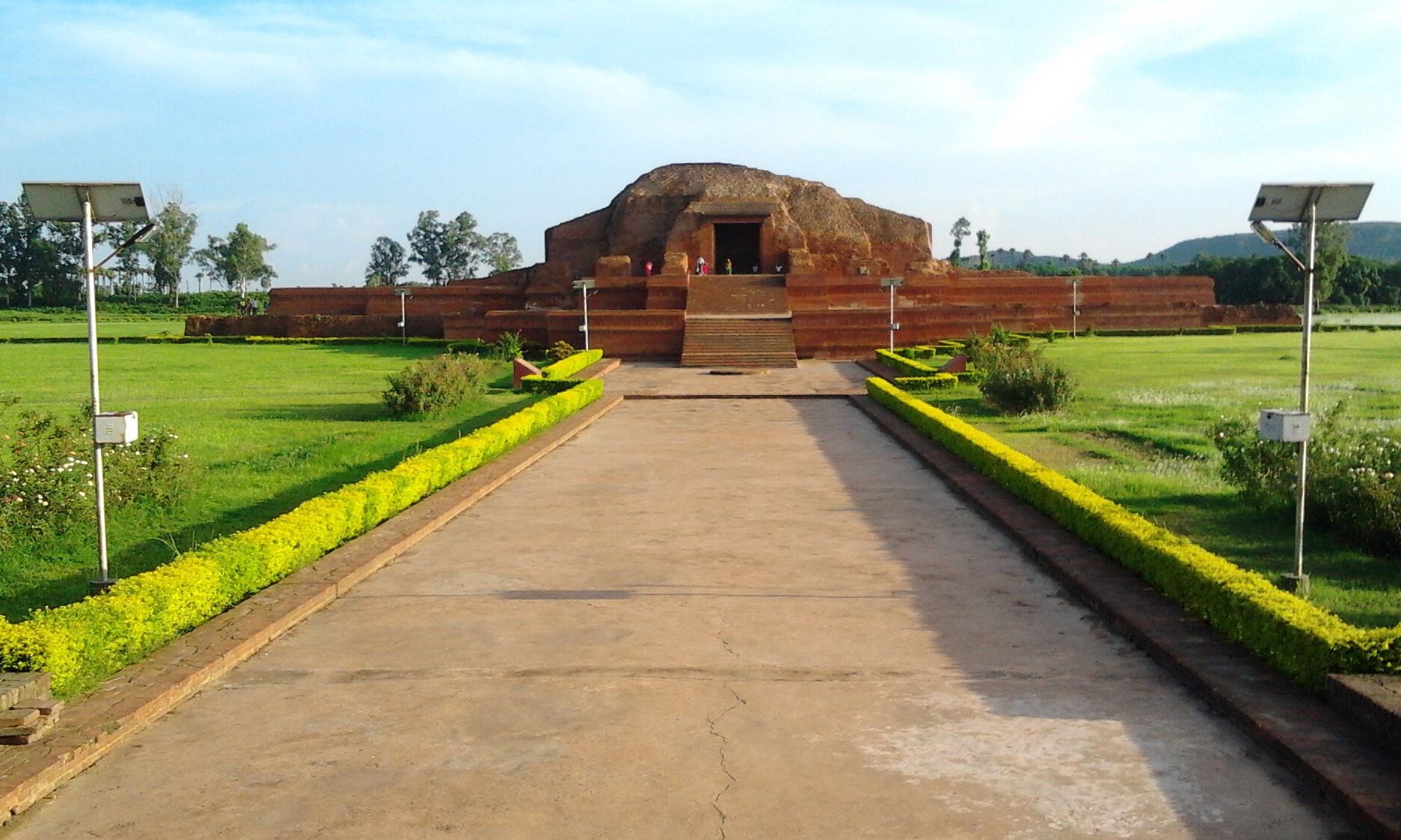लोक नाटक (Folk Drama)
शिल्प कला (Sculpture)
मुखौटा (Mask Making)
चटाई (Tapper Mats / Chatayee)
तस्सर सिल्क (Tassar Silk)
अंगदेश के खान-पान (Cuisines of Ang Desh)
मिट्टी के खिलौने (Clay Toys)
बाँस के सामान (Bamboo Work)
पौती (Pauti)
सिक्की घास के सामान (Sikki Grass Articles / Sikki Arts)
The sikki is a type of grass that is connected with important ceremonies and rituals. Sikki is wired and stitched together with the pasikki, dyed in several different shades, using a thick needle called takua. Boxes made of Sikki are used for various purposes. A special container woven out of sikki grass, the pauti, is a sentimental gift that accompanies the bride when she leaves her home after her wedding. Indeed, for the bride, next to the wooden container for sindoor (sinhora), is a precious gift that she treasures for her entire life.
सुल्तानगंज बुद्ध, सुलतानगंज(Sultanganj Buddha) – Sultanganj
The Sultanganj Buddha is 2.3m high and 1m at its widest point and weighs about 500kgs. It was cast by the technique known as the 'lost wax' process, in which a solid core of clay is overlaid with wax. The sculptor models the fine details in the wax coating. The wax is covered with a liquid layering of clay and plaster whichhardens to form a mould. When heat is applied the wax melts and molten metal is poured in. The finished statue is finally obtained by removing the outer casting when cool.
/*! elementor - v3.20.0 - 20-03-2024 */ .elementor-widget-divider{--divider-border-style:none;--divider-border-width:1px;--divider-color:#0c0d0e;--divider-icon-size:20px;--divider-element-spacing:10px;--divider-pattern-height:24px;--divider-pattern-size:20px;--divider-pattern-url:none;--divider-pattern-repeat:repeat-x}.elementor-widget-divider .elementor-divider{display:flex}.elementor-widget-divider .elementor-divider__text{font-size:15px;line-height:1;max-width:95%}.elementor-…मञ्जूषा कला (Manjusha Art)
Manjusha
Manjushas are temple-shaped boxes, made of bamboo, jute straw and paper. According to legend, Manjusha art traces its origin to the Bihula-Vishahri or Mansha folktale, popular in erstwhile Anga Pradesh and found also in an altered form in West Bengal. The paintings are drawn primarily on the occasion of the Bishari puja, celebrated usually in August to propitiate the snake gods. As Bihula's boat was decorated by a character called Lahsan Mali, this art has been confined to the Mali or gardener caste. Like Madhubani, Manjusha too is pictorial reflections of folklore, poetry and the larger cultural consciousness of the region.
/*! elementor - v3.7.2 - 21-08-2022 */ .elementor-widget-image{text-align:center}.elementor-widget-image a{display:inline-block}.elementor-widget-image a img[src$=".svg"]{width:48px}.elementor-widget-image img{vertical-align:middle;display:inline-block} Manoj Kumar Pandit "Manjusha G…


















